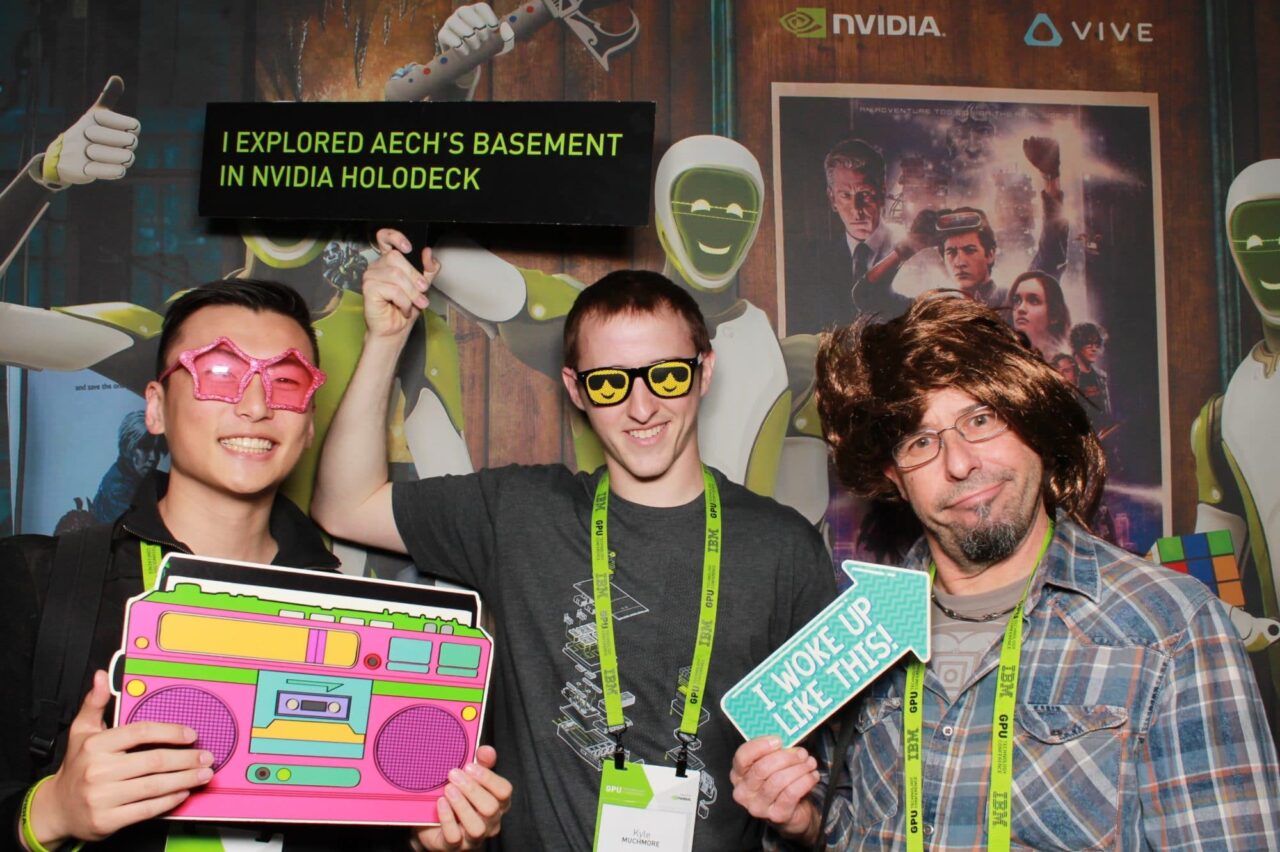While I was at the GPU Technology Conference all week attending sessions and writing blogs, my son was at an opening night screening of “Ready Player One,” the new Steven Spielberg virtual reality thriller.
But I did him one better: I got to be in the movie. Not literally, but virtually.
This year’s GTC VR Village featured a gaming experience in which three attendees in separate rooms equipped with VR gear joined forces to “escape” from Aech’s Basement, one of the film’s virtual settings.
Powered by NVIDIA’s Holodeck collaboration platform, the “Ready Player One Escape Room” presented players with a straightforward task: Identify objects that could be picked up, use them to solve a series of puzzles, and “escape” from the basement within 10 minutes.
Easier said than done: this would be a challenge. A fun one.
Shockingly Real
Make no mistake, the VR — experienced through HTC VIVE headsets and controllers — is impressive. The virtual room itself, which is filled with authentic assets from the film that were contributed by Warner Bros., looks and feels shockingly real. The ability to work in tandem with a virtual teammate physically located in another room is jaw-dropping. As soon as the game started, there we were: three robotic avatars, in the same space, able to cooperate and navigate a room together.
As good as the technology is (you can read more about that here), and as awesome as the experience is, navigating a VR space requires a moment to adjust to the dazzling new environment.
We spent the first few minutes marveling at how we could see our own shoulders or stand within each other by stepping into the same virtual space. We experimented with the ability to teleport ourselves from one part of the room to another (a far better strategy than walking into the physical walls we couldn’t see). We grabbed at things that turned out to be ghost objects, our hands passing right through them. There was a lot of laughing.
When I picked up a Rubik’s Cube, it cast a beam of light with Batman’s bat signal onto whatever I pointed it at. Doing so aided our progress, although I wasn’t sure how.
The first puzzle that became apparent to us involved picking up a bunch of videotapes (yes, 21st century readers: videotapes) and placing them in a specific arrangement. One tape wouldn’t go into any spot, so we found a TV with a VCR hooked up to it and slid the tape in. It displayed the word “Excalibur” on the screen.
That reminded me of the sword one of my teammates had playfully tried to stab me with while we were initially fumbling around.
Excited, he teleported himself across the room and grabbed the sword. A few minutes of experimentation later — which involved stabbing at a wall with a sword, flashing a bat signal onto it and trying anything else we could think of — we cracked it, and suddenly a coin came into view.
A Game Within a Game
One of my teammates grabbed it and dropped it into an arcade game, which turned out to be “Joust” — a classic title for those of us who remember life before the internet. (And it’s a good thing I’m in that category, because my teammates had never seen or heard of the game.)
Eventually, we figured out how to play together, and suddenly, just like magic, the room disappeared, and we all looked at each other. Had there been a malfunction? Did we run out of time? No, working together, we’d managed to escape.
After our headsets were removed and we returned to reality, it was clear that despite not knowing exactly what we were doing we’d all had a great time. And therein lies the magic of VR: Like the best road trips, the destination is irrelevant. It’s all about the journey.
And what a 10-minute journey it was.
